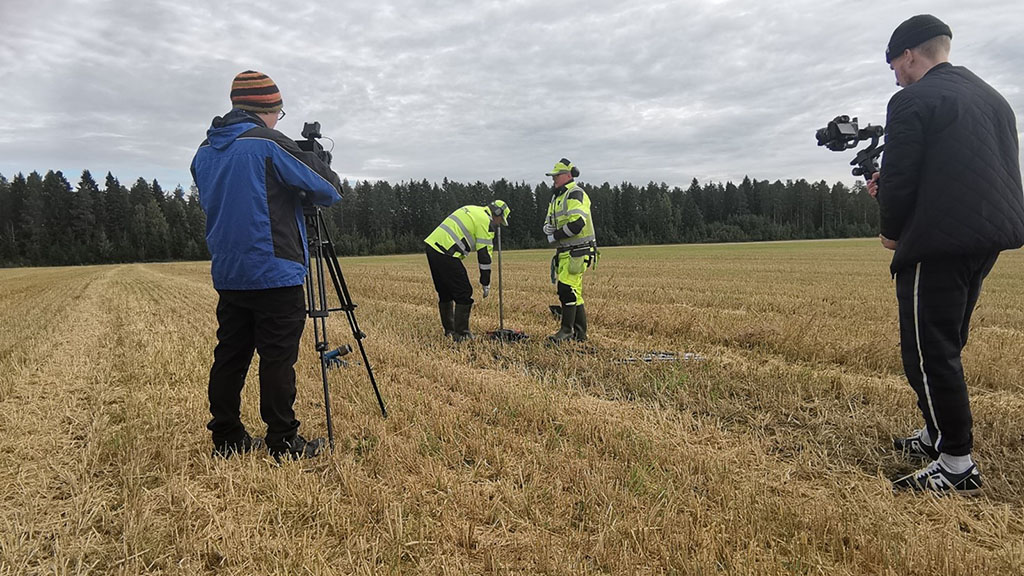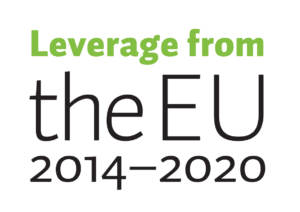Predictive Models and More Detailed Risk Assessment Maps Improve Regional Management of Acid Sulfate Soils
Acid sulfate soils are naturally occurring sulfur-rich soils. They are common in coastal areas throughout Finland and sometimes extend deep inland. Information on the locations of acid sulfate soils can be used to reduce the risks they cause to the environment and underground structures. The aim of the Managing Acid Sulfate Soils (HASUdigi) project was to increase the know-how on acid sulfate soils of land-use and construction operators. The project target areas were located in Northern Ostrobothnia, but the operation models can be employed everywhere where acid sulfate soils are found.

Sulfide sulfur is generally harmless for land use, but it becomes problematic when it comes into contact with oxygen, i.e. when the surface level of groundwater is lowered or sulfide-rich soil is excavated and dumbed. As a result of the oxidisation, sulfur acid is formed in the soil, which increases the acidity of runoff waters, mobilises metals in the soil that are toxic to aquatic organisms, and forms a corrosive environment that is detrimental to steel and concrete structures.
Acting before the damage happens is essential in preventing the effects of soil acidification. When the risks associated with acid sulfate soils are considered during the planning stages of land use and construction, it is easier to find the solutions that are best suited to the site and avoid expensive surprises.
The HASUdigi project involved providing training to construction professionals on the methods and tools for managing the risks of acid sulfate soils. At the same time, research data and information was collected and shared.
Acid sulfate soils and corrosion analysis database – a single source for regional soil information
If the soil at a construction site is suspected of forming acids, carrying out a sulfate soil or corrosion survey is a good idea. The survey provides detailed site-specific data on the soil and its properties. In the HASUdigi project, this data was collected in a uniform format to a public database.
The acid sulfate soils and corrosion analysis database was published in GTK’s Ground investigations map service. The database assists in detecting regional acid sulfate soils and benefits soil surveys as well. The database improves the collection of the analysis data generated in connection with construction projects and facilitates the dissemination and reuse of information.
The database is freely accessible and downloadable. Operators producing research information on acid sulfate soils in Finland can send their surveys to GTK and contribute to the public database.
A predictive model for acid sulfate soils facilitates targeting research
A model was created in the project for predicting the possible areas prone to fine-grained acid sulfate soils in the Oulu region. The model enables the cost-efficient optimizing of field investigations. Analysis of the geological deposition environment and data from different sources build up the geospatial predictive model. Similar predictive models have previously been created for the Helsinki and Espoo regions.
The risk assessment maps provide a more detailed understanding of regional characteristics
In 2021, GTK finished a decade-long national project of mapping the acid sulfate soils. As a result, a map service of acid sulfate soils covering all coastal areas of Finland was published. The map service provides a good overview on the occurrence of acid sulfate soils, and it can be used as a tool in the planning of land-use and construction projects. In addition, it also helps operators to be prepared for the need to carry out additional surveys in areas identified as risk areas.
In the HASUdigi project, detailed acid sulfate soil maps and liming-need maps based on sample points were created for the City of Oulu’s pilot areas. The detailed maps and the denser sampling network enable the detection of acid sulfate soils during the planning and permit application stages of land-use and construction projects. This efficiently reduces and helps to avoid environmental and technical risks during construction.
Further information
Hilkka Kallio, Project Manager
Geological Survey of Finland GTK
hilkka.kallio@gtk.fi
Tel.: +358 29 503 2241


